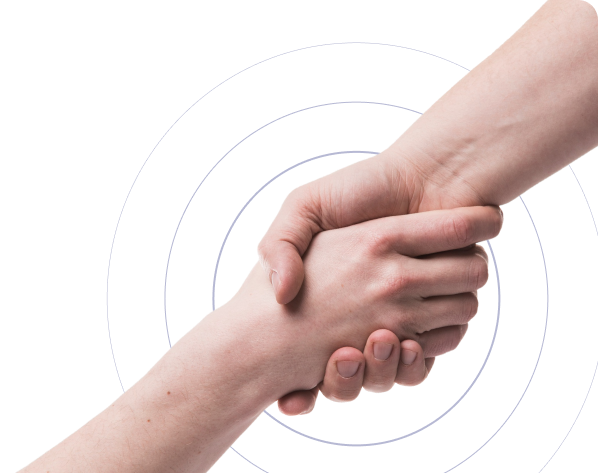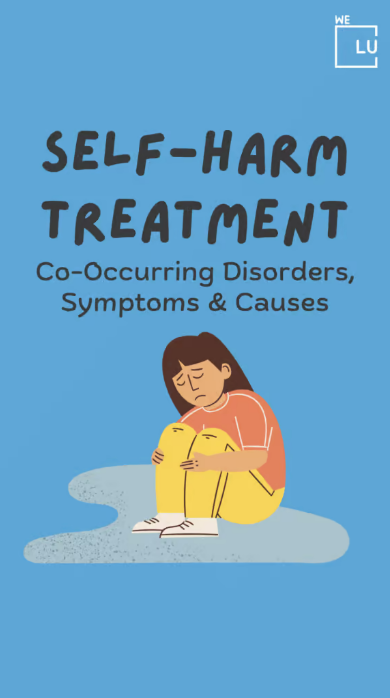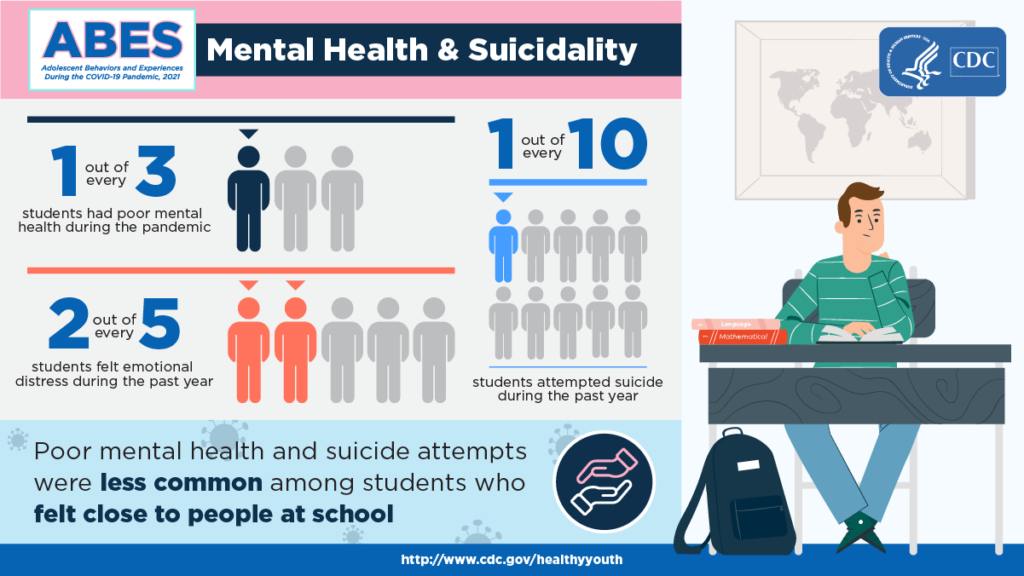Why Do People Self Harm?
Self-harm is a distressing and enigmatic behavior affecting individuals across different ages, genders, and backgrounds. It involves intentionally causing physical harm to oneself to cope with overwhelming emotions, psychological pain, or a sense of control in difficult situations. While self-harm can manifest in various forms, such as cutting, burning, scratching, or hitting oneself, it is crucial to understand the underlying motivations and triggers behind this behavior.
The reasons why people self-harm are multifaceted and deeply personal. It is not merely attention-seeking or a cry for help but a complex manifestation of underlying emotional turmoil. For some individuals, self-harm temporarily relieves intense emotions, providing a momentary distraction or a sense of release.
Others may view it as a way to regain control over their bodies when they feel overwhelmed by external circumstances. Self-harm can also serve as a form of self-punishment or a means of expressing deep-seated feelings of self-hatred.
While self-harm is often associated with mental health conditions like depression, anxiety, or borderline personality disorder, it can also occur independently. It is important to note that self-harm should not be dismissed or judged but approached with empathy and understanding. By delving into the underlying symptoms and causes of self-harm, we can work towards creating a supportive environment that encourages healing, resilience, and recovery.
What Causes Self Harm?
The reasons for self harm are complex and can vary from person to person. It is essential to approach this topic sensitively and recognize that each individual’s experiences and reasons for self-harm may differ. While there is no one-size-fits-all explanation, several common factors are often associated with self-harm:
- Emotional Distress: Self-harm can be a way for individuals to cope with overwhelming emotional pain, such as feelings of sadness, anger, guilt, shame, or emptiness. It may be a temporary release or a means to regulate intense emotions.

Skip To:
Learn More:
- Borderline Personality Disorder Treatment & Diagnosis
- BPD Splitting Meaning, Duration & Causes
- Obsessive Compulsive Personality Disorder & OCD
- CBT Therapy for Mental Health Disorders, Process, Efficacy, Techniques, Types & CBT for Co-Occurring Disorders
- Co-occurring disorders, Diagnosis, Risk Factors, Mental Health, Substance Abuse & Dual Diagnosis Rehab Washington
- We Level Up WA Mental Health Center
- Mental Health Conditions: Self-harm often coexists with various mental health conditions, including depression, anxiety disorders, borderline personality disorder, post-traumatic stress disorder (PTSD), and eating disorders. These conditions can contribute to despair and hopelessness, driving individuals towards self-harm as a coping mechanism.
- Childhood Trauma: Experiences of abuse, neglect, or other forms of trauma during childhood can significantly impact an individual’s emotional well-being. Self-harm may emerge as a maladaptive coping strategy to manage the distress and psychological wounds associated with past traumatic experiences.
- Difficulty Expressing Emotions: Some individuals struggle with effectively expressing their emotions or find it challenging to communicate their pain to others. Self-harm may become a way to externalize and communicate inner turmoil that feels otherwise inexpressible.
- Sense of Control: Engaging in self-harm can temporarily control one’s body and emotions, particularly when individuals feel overwhelmed or helpless in their daily lives.
- Social Influence: In certain cases, peer influence or exposure to self-harm behaviors among friends or online communities can contribute to adopting self-harm as a coping mechanism.
Self-harm is not a healthy or effective long-term solution for managing emotional pain. If you or someone you know is struggling with self-harm, seeking professional help from mental health providers who can offer appropriate support and interventions is essential.
Self Harm Facts
The term self-harm is commonly used to describe a wide range of behaviors and intentions, including attempted hanging, impulsive self-poisoning, and superficial cutting in response to intolerable tension. Risk factors include socioeconomic disadvantage and psychiatric illness—particularly depression, substance abuse, and anxiety disorders. Assessment after self-harm includes careful consideration of the patient’s intent and beliefs about the lethality of the method used. Strong suicidal intent, high lethality, precautions against being discovered, and psychiatric illness indicate high suicide risk.
Self Harm Meaning
Self-injury is a type of self-harm that refers to deliberately causing pain or damage to your body without suicidal intent. Self-injury is more common in young people. Some people who self-harm may also have suicidal thoughts.
Common forms include cutting, severe scratching, burning, and banging or hitting; most self-injure individuals have used multiple methods. Although diagnostically heterogeneous, self-injurers typically exhibit two prominent characteristics: negative emotionality and self-derogation. Self-injury is most often performed to alleviate intense negative emotions temporarily. Still, it may also express self-directed anger or disgust, influence or seek help from others, end periods of dissociation or depersonalization, and help resist suicidal thoughts.
Who Self Injuries?
Interestingly, while it is common for people to assume that NSSI is more common in women, general population studies find equivalent rates between men and women. However, there does appear to be a sex difference regarding the methods of NSSI used; specifically, women are more likely to use cutting, whereas men are more likely to use hitting or burning.
Finally, two other sociodemographic trends have been repeatedly noted. NSSI appears to be more common among people who report non-heterosexual orientations (for example, homosexual, bisexual, and questioning), and among Caucasians than non-Caucasians.-injury is a type of self-harm and refers to deliberately causing pain or damage to your own body without suicidal intent. Self-injury is more common in young people. Some people who self-harm may also have suicidal thoughts.
End the Emotional Pain. Get Your Life Back.
Feeling Depressed, Anxious or Struggling with Mental Health Illness? Get Safe Comfortable Mental Health Dual Diagnosis High-Quality Therapy From Counselors That Care. Begin Your Recovery Now.
Hotline: (509) 348-4077

Self Harm Statistics
Nonsuicidal self-injury (NSSI) is typically associated with emotional and psychiatric distress. It is most common among young adults. Lifetime rates in these populations are about 15% to 20%, and onset typically occurs around age 13 or 14. In contrast, about 6% of adults report a history of NSSI. It is unclear whether the lower lifetime rate in adults reflects an increase in NSSI among recent cohorts of adolescents or an artifact of memory by which most adults who self-injured as adolescents do not recall their NSSI. Generally speaking, rates of NSSI appear to be similar across different countries.
5%
More than 5% of people seen at a hospital after self-harm will have committed suicide within 9 years.
Source: NCBI
50%
About 50% of people seek help for their self-harm but only from friends instead of professionals
Source: NCBI
45%
45% of people use cutting as their method of self-injury
Source: NCBI
Get Help. Get Better. Get Your Life Back.
Searching for Accredited Dual Diagnosis Mental Health Centers Near You?
Even if therapy failed previously, or are in the middle of a difficult crisis, we stand ready to support you. Our trusted behavioral health specialists will not give up on you. When you feel ready or just want someone to speak to about counseling alternatives to change your life call us. Even if we cannot assist you, we will lead you to wherever you can get support. There is no obligation. Call our hotline today.
FREE 24/7 Dual Diagnosis Mental Health Services Hotline
Self Cutting Symptoms
Self-cutting, also known as self-injury or self-mutilation, refers to deliberately cutting or injuring oneself. It is important to note that self-cutting is a concerning behavior that requires professional help and support. The following are some symptoms and signs commonly associated with self-cutting:
- Frequent Unexplained Wounds: Individuals who engage in self-cutting may have a pattern of unexplained wounds, often in specific areas of their body, such as the wrists, arms, thighs, or abdomen. These wounds may appear as superficial cuts, scratches, or more severe lacerations.
- Secretive Behavior: People who self-cut often try to hide their self-injurious behaviors. They may wear long sleeves or pants to conceal the wounds or scars, even in warm weather. They might also make excuses or provide vague explanations when questioned about injuries.
- Presence of Scars: Over time, repetitive self-cutting can lead to visible scars on the individual’s body. These scars may vary in size, shape, and appearance depending on the severity and frequency of the self-inflicted injuries.
- Frequent Isolation or Withdrawal: Individuals who engage in self-cutting may isolate themselves from others or withdraw from social activities. They may feel ashamed, embarrassed, or fear judgment from others regarding their self-harming behaviors.
- Emotional Instability: Self-cutting is often associated with emotional distress. Individuals who self-cut may exhibit signs of emotional instability, including intense mood swings, irritability, anger, anxiety, depression, or feelings of emptiness.
- Difficulties with Coping: Those who resort to self-cutting as a coping mechanism may struggle to handle stress, emotional pain, or overwhelming situations. They may have limited coping strategies or feel self-injury is the only way to alleviate their distress temporarily.
- Preoccupation with Self-Harm: Individuals who self-cut may frequently think about self-harm or exhibit signs of obsession with self-injury. They might spend significant time researching or seeking information related to self-cutting online.
It is crucial to remember that self-cutting is a complex issue, and not everyone who self-harms will display all these symptoms. If you or someone you know is struggling with self-cutting, reaching out to a mental health professional or healthcare provider for appropriate support, guidance, and treatment is essential.
Common Thoughts Of Self Harm
Please note that discussing common self-harm-related thoughts can be triggering for some individuals. If you or someone you know is experiencing these thoughts or struggling with self-harm, it is important to seek help from a mental health professional or a helpline immediately. However, to provide a general understanding, here are some common thoughts that individuals may experience about self-harm:
- Emotional Relief: Some individuals may believe self-harm is a way to temporarily relieve or distract themselves from overwhelming emotions or psychological pain. They might view it as a release valve for their emotional turmoil.
- Control and Empowerment: Thoughts of self-harm can arise from a desire to regain control over one’s life or body. Self-harm can provide power or autonomy when individuals feel helpless or trapped.
- Self-Punishment: Some individuals may view self-harm as a form of self-punishment for perceived faults, mistakes, or shortcomings. They may believe that causing themselves physical pain is a way to atone or make amends for perceived failures.
- Emotional Numbness: In certain cases, individuals may engage in self-harm to combat feelings of emotional numbness or dissociation. The physical pain inflicted can serve as a means to feel something when they feel emotionally disconnected.
- Communication and Expression: For some individuals, self-harm may be a way to communicate their inner pain or express emotions that they find difficult to articulate verbally. It can be seen as a visible manifestation of internal struggles.
- Coping Mechanism: Individuals may view self-harm as a coping mechanism, albeit an unhealthy one. They may believe it helps them cope with stress, anxiety, or overwhelming situations, providing temporary relief or control.
It is crucial to remember that these thoughts indicate underlying distress and should not be ignored or normalized. If you or someone you know is experiencing self-harm thoughts, seeking professional help is essential.
First-class Facilities & Amenities
World-class High-Quality Mental Health Services & Behaviroal Health Substance Abuse Treatment
Rehab Centers TourRenowned Mental Health Centers. Serene Private Facilities. Inpatient Rehab Programs Vary.
Mental Health Helpline: (509) 348-4077Proven recovery success experience, backed by a Team w/ History of:
15+
Years of Unified Experience
100s
5-Star Reviews Across Our Centers
10K
Recovery Success Stories Across Our Network
- Low Patient to Therapist Ratio
- Comprehensive Dual-Diagnosis Treatment
- Complimentary Family & Alumni Programs
- Coaching, Recovery & Development Events
- Comfortable Onsite Medical Detox Center
Depression Self Harm
Depression and self-harm are two interconnected and serious issues that often coexist. While not all individuals who experience depression engage in self-harm, self-harm can be more prevalent among individuals with depression. Here’s a closer look at the relationship between depression and self-harm:
- Depression as a Risk Factor: Depression is a mental health condition characterized by persistent sadness, hopelessness, and a loss of interest in activities. It can create an overwhelming sense of emotional pain and despair. For some individuals with depression, self-harm may become a maladaptive coping mechanism to alleviate emotional distress or gain temporary control.

- Emotional Release: Self-harm can be seen as a way to release emotional pain associated with depression. The physical pain caused by self-harm can temporarily distract from or provide an outlet for the intense emotional anguish individuals with depression may experience.
- Self-Punishment: Feelings of guilt, worthlessness, and self-blame are common in depression. Some individuals may resort to self-harm as a form of self-punishment, believing that they deserve the pain or that it offers a way to atone for perceived failures or flaws.
- Communication and Expression: Self-harm can serve as a means of communication or expression for individuals with depression. It can be an attempt to show others the depth of their emotional pain when they struggle to express their inner struggles verbally.
- Coping Mechanism: In the absence of healthy coping skills, individuals with depression may turn to self-harm as a coping mechanism. It can provide a temporary escape or relief from overwhelming thoughts and emotions.
It is crucial to understand that self-harm is not a solution to depression, nor does it address the underlying causes. If you or someone you know is experiencing depression or self-harm, seeking professional help is essential. Mental health professionals can provide appropriate support, therapy, and treatment options to address depression and self-harming behaviors, fostering healing and recovery.
World-class, Accredited, 5-Star Reviewed, Effective Mental Health Dual Diagnosis Programs. Complete Integrated Inpatient Rehab with Free Post Discharge Therapy Planning.
Hotline: (509) 348-4077End the Emotional Pain Rollercoaster. Gain Stability & Happiness Through Recovery Treatment. Start Mental Health Counseling Today. Get Free No-obligation Guidance by Behaviroal Health Specialists Who Understand Mental Health Recovery.
Popular Why do people self harm? FAQs
-
Why Do I Self Harm?
Self-harm is a complex behavior, and its reasons can vary from person to person. Some common factors include using self-harm as a coping mechanism to deal with overwhelming emotions or psychological pain, seeking control in difficult situations, expressing deep-seated feelings of self-hatred or self-punishment, or attempting to communicate emotional distress. Remembering that self-harm is not a healthy or effective long-term solution for managing your pain and seeking professional help is crucial for understanding and addressing the underlying causes.
-
Why Do I Want To Self Harm?
Wanting to self-harm can stem from various underlying factors. It might result from feeling overwhelmed by intense emotions and wanting temporary relief or distraction. You may also need control when facing situations that seem out of your control. Additionally, self-harm may be driven by a desire to punish yourself or communicate your inner pain when it feels difficult to express verbally. Recognizing these desires and seeking support from mental health professionals can help you find healthier coping strategies and address the root causes of your self-harming thoughts. Remember, you don’t have to face this alone; resources are available to help you through this challenging time.
Signs of Depression Video
Video Script
Various resources are accessible to assist you in effectively managing your mental health. Your initial step should involve contacting your doctor or a mental health professional for a comprehensive assessment. Furthermore, you may wish to explore options like participating in a support group, such as a 12-step program, or engaging with an online support community to connect with others who face similar challenges. Numerous self-help techniques, including mindfulness, relaxation, and cognitive-behavioral therapy, can be considered.
The support and understanding of your friends and family can also prove invaluable in navigating your depression. Engaging in open conversations with them about your emotions and difficulties can be beneficial. Moreover, identifying activities and individuals that positively impact your mental well-being and actively seeking them out when you feel overwhelmed by depression can be an effective strategy.
Experience Transformative Recovery at the We Level Up Treatment Center.
See our authentic success stories. Get inspired.
Get the help you deserve.



Start a New Life
Begin with a free call to a behavioral health treatment advisor. Learn more about our dual-diagnosis programs. The We Level Up treatment center network delivers recovery programs that vary by each treatment facility. Call to learn more.
- Personalized Care
- Caring Accountable Staff
- World-class Amenities
- Licensed & Accredited
- Renowned w/ 5-Star Reviews
We’ll Call You
Search We Level Up WA Why Do People Self Harm? & Resources
Sources
- [1] Peterson J, Freedenthal S, Sheldon C, Andersen R. Nonsuicidal Self injury in Adolescents. Psychiatry (Edgmont). 2008 Nov;5(11):20-6. PMID: 19724714; PMCID: PMC2695720. Learn More: why do people self harm
- [2] Self-harm: assessment, management and preventing recurrence. London: National Institute for Health and Care Excellence (NICE); 2022 Sep 7. (NICE Guideline, No. 225.) Available from: https://www.ncbi.nlm.nih.gov/books/NBK588208/ Learn More: why do people self harm
- [3] National Collaborating Centre for Mental Health (UK). Self-Harm: Longer-Term Management. Leicester (UK): British Psychological Society (UK); 2012. (NICE Clinical Guidelines, No. 133.) 10, SUMMARY OF RECOMMENDATIONS. Available from: https://www.ncbi.nlm.nih.gov/books/NBK126778/
- [4] Pickard H. Self-Harm as Violence: When Victim and Perpetrator Are One. In: Widdows H, Marway H, editors. Women and Violence: The Agency of Victims and Perpetrators. London: Palgrave Macmillan; 2015. Chapter 4. Available from: https://www.ncbi.nlm.nih.gov/books/NBK349101/
- [5] McHale J, Felton A. Self-harm: what’s the problem? A literature review of the factors affecting attitudes towards self-harm. J Psychiatr Ment Health Nurs. 2010 Oct;17(8):732-40. doi: 10.1111/j.1365-2850.2010.01600.x. Epub 2010 Jun 22. PMID: 21050340.
- [6] Evidence reviews for supporting people to be safe after self-harm: Self-harm: assessment, management and preventing recurrence: Evidence review N. London: National Institute for Health and Care Excellence (NICE); 2022 Sep. (NICE Guideline, No. 225.) Available from: https://www.ncbi.nlm.nih.gov/books/NBK588194/
- [7] Soreff SM, Basit H, Attia FN. Suicide Risk. [Updated 2022 Jun 7]. In: StatPearls [Internet]. Treasure Island (FL): StatPearls Publishing; 2022 Jan-. Available from: https://www.ncbi.nlm.nih.gov/books/NBK441982/
- [8] Skegg K. Self-harm. Lancet. 2005 Oct 22-28;366(9495):1471-83. doi: 10.1016/S0140-6736(05)67600-3. PMID: 16243093.
- [9] Rogers JP, Chesney E, Oliver D, Begum N, Saini A, Wang S, McGuire P, Fusar-Poli P, Lewis G, David AS. Suicide, self-harm and thoughts of suicide or self-harm in infectious disease epidemics: a systematic review and meta-analysis. Epidemiol Psychiatr Sci. 2021 Apr 27;30:e32. doi: 10.1017/S2045796021000214. PMID: 33902775; PMCID: PMC7610720.
- [10] Klonsky ED, Muehlenkamp JJ. Self-injury: a research review for the practitioner. J Clin Psychol. 2007 Nov;63(11):1045-56. doi: 10.1002/jclp.20412. PMID: 17932985